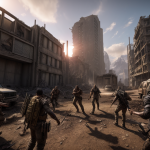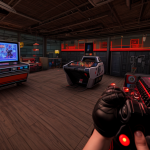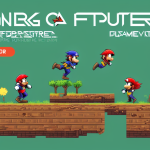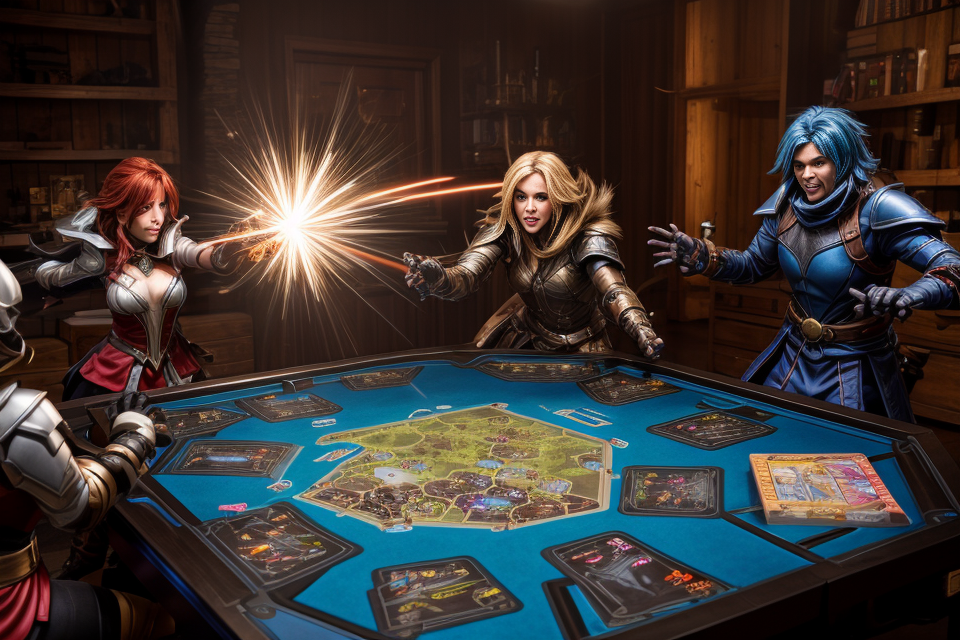Welcome to a world of fantasy and adventure, where every move counts and the fate of your party rests on your decisions. In the realm of tabletop RPGs, the concept of “turns” is a fundamental aspect of gameplay. Each turn represents a brief window of opportunity for players to make strategic decisions and take actions that can impact the outcome of their adventure. But just how many actions can you take in a single turn?
This comprehensive guide aims to provide players with a deep understanding of the mechanics of taking actions in a turn. From the number of actions available to the different types of actions you can take, this guide will cover everything you need to know to maximize your effectiveness in combat.
Whether you’re a seasoned veteran or a newcomer to the world of RPGs, this guide will provide valuable insights and tips to help you navigate the complexities of combat and emerge victorious. So, are you ready to discover the secrets of taking actions in a turn? Let’s dive in and explore the thrilling world of combat adventures!
Understanding Combat Adventures
The Basics of Combat
Combat in role-playing games such as Dungeons & Dragons (D&D) is a crucial aspect of the gameplay. It involves characters using weapons, spells, and abilities to defeat their enemies. The success of combat depends on several factors, including the actions that characters can take in a turn.
Time Units
In D&D, combat is measured in rounds, which represent a period of time in which combatants can act. A round lasts for about 6 seconds in the game, and each round is divided into two phases: the combat phase and the bonus action phase. During the combat phase, players can take one action, and during the bonus action phase, they can take one bonus action.
Actions in a Turn
Each turn, a player can take one action and one bonus action. The action can be any action that the character is capable of performing, such as attacking with a weapon, casting a spell, or using an item. The bonus action can be any action that the character can take in addition to their main action, such as making an additional attack or casting a spell.
It is important to note that not all actions require a bonus action. For example, a character can use a weapon to make a single attack during their turn without needing to take a bonus action. Additionally, some spells and abilities may require additional time or effort, making it impossible for a character to take a bonus action in the same turn.
Overall, understanding the basics of combat in D&D is essential for players to effectively engage in combat adventures. Knowing how many actions can be taken in a turn and when to use them can make a significant difference in the outcome of a battle.
Types of Actions
Basic Actions
In combat adventures, basic actions are the fundamental actions that a player can take during their turn. These actions are usually straightforward and do not require any special conditions or circumstances.
Movement
Movement is a basic action that allows a player to move their character through the game world. This action is essential for exploring the environment, reaching objectives, and avoiding danger. In most games, movement is limited by the character’s speed and the terrain they are moving through.
Attack
Attack is another basic action that allows a player to damage enemies or opponents in the game. This action is crucial for defeating enemies and progressing through the game. The type of attack and the damage it deals depend on the character’s abilities and equipment.
Special Actions
Special actions are additional actions that can be taken during a turn, but they often require specific conditions or circumstances. These actions can provide a player with unique advantages or abilities that can help them in combat.
Abilities
Abilities are special actions that characters can perform, usually based on their skills or talents. These abilities can range from magical spells to combat maneuvers, and they often require the player to spend action points or other resources to activate them.
Equipment
Equipment refers to the items that a character can use during combat, such as weapons, armor, or potions. These items can provide a player with unique abilities or bonuses, such as increased damage or additional defense. To use equipment, a player must often spend action points or other resources to activate or equip the item.
Planning Your Turn
Prioritizing Actions
When planning your turn during combat adventures, it is crucial to prioritize your actions carefully. Here are some key considerations to keep in mind:
Maximizing Offense
If your primary goal is to deal as much damage as possible to your opponents, you will need to focus on maximizing your offense. Here are some strategies to consider:
Attacking Multiple Targets
One effective way to maximize your offense is to attack multiple targets at once. This can be particularly useful if you have a ranged attack that allows you to target multiple enemies at once, or if you have a spell or ability that affects multiple targets. By attacking multiple targets, you can potentially take out several enemies at once, which can greatly increase your overall damage output.
Combining Attacks
Another strategy for maximizing offense is to combine your attacks with those of your allies. If you have a spell or ability that enhances the damage of your allies’ attacks, you can coordinate your attacks to take down enemies more quickly. Additionally, if you have a weapon or ability that deals extra damage against certain types of enemies, you can use this to your advantage by focusing your attacks on those enemies.
Defense
While offense is crucial in combat adventures, defense is also important for staying alive and avoiding taking unnecessary damage. Here are some strategies to consider:
Positioning
Your positioning can have a significant impact on your defense. For example, if you are standing in a position where you are exposed to enemy attacks, you may take more damage than necessary. On the other hand, if you position yourself behind cover or in a position where you can block enemy attacks, you may be able to reduce the damage you take.
Blocking
Another defense strategy is to block enemy attacks. This can be particularly useful if you have a shield or other defensive ability that allows you to absorb damage. By blocking enemy attacks, you can reduce the damage you take and stay in the fight longer. Additionally, if you have a spell or ability that enhances your defense, you can use this to your advantage by positioning yourself in a way that maximizes its effectiveness.
Considering Consequences
When planning your turn during combat adventures, it is crucial to consider the consequences of your actions. This includes the potential movement consequences and action consequences.
Movement Consequences
When deciding on your movement, it is essential to consider the consequences of your actions. Territory control is a critical factor in many combat adventures, and moving too close to an opponent’s territory can put you at a disadvantage. Additionally, environmental hazards such as traps, obstacles, and hazards must be considered to avoid unnecessary risks.
Territory Control
Territory control is a critical factor in many combat adventures. Players must consider the control of different territories and the potential advantages and disadvantages of moving closer to an opponent’s territory. For example, moving closer to an opponent’s territory can provide more opportunities for attack, but it also increases the risk of being attacked.
Environmental Hazards
Environmental hazards such as traps, obstacles, and hazards must be considered when planning your movement. These hazards can significantly impact your turn and potentially harm your character. It is crucial to be aware of these hazards and plan accordingly to avoid unnecessary risks.
Action Consequences
When deciding on your actions, it is essential to consider the consequences of your actions. Opportunity cost is a critical factor to consider, as well as triggered abilities that may be activated by your actions.
Opportunity Cost
Opportunity cost is the cost of choosing one action over another. When deciding on your actions, it is crucial to consider the potential benefits and drawbacks of each action and how they may impact your overall strategy.
Triggered Abilities
Many combat adventures have triggered abilities that may be activated by certain actions. It is essential to consider these abilities and how they may impact your turn and overall strategy. Triggered abilities can provide significant advantages, but they can also have significant drawbacks.
Taking Your Turn
Declaring Actions
Communicating Your Intentions
When it comes to declaring actions in combat adventures, clear communication is key. Players must communicate their intentions to the game master (GM) or to the other players at the table. This can be done verbally or through written communication, such as through a chat window in an online game.
It’s important to be specific when communicating your intentions. Instead of simply saying “I attack,” players should describe the action they are taking, such as “I swing my sword at the goblin.” This helps to avoid confusion and ensures that everyone at the table understands what is happening.
In addition to communicating your intentions, players should also provide any relevant information that might affect the outcome of their action. For example, if a player is attempting to hit a specific target, they should let the GM know which target they are aiming for.
Recording Actions
Once a player has declared their actions, they should be recorded by the GM or another player at the table. This can be done using a variety of methods, such as writing down the actions on a piece of paper or using a digital tool.
It’s important to record actions accurately and clearly, so that everyone at the table can refer back to them later if necessary. This is especially important in complex combat situations, where multiple actions are happening at once.
In addition to recording actions, it’s also important to keep track of any modifiers that might affect the outcome of an action. For example, if a player has a high strength score, they might receive a bonus to their attack rolls. These modifiers should be recorded along with the action, so that everyone at the table can see how they affect the outcome.
Overall, declaring actions and recording them accurately are both important aspects of taking a turn in combat adventures. By following these guidelines, players can ensure that everyone at the table understands what is happening and can keep track of the actions and modifiers that affect the outcome of the game.
Resolving Actions
When it comes to resolving actions during a turn in combat adventures, there are several steps that need to be followed. These steps include determining the order of resolution, which will dictate the sequence in which actions are taken.
Order of Resolution
The order of resolution is determined by the initiative. In most games, initiative is determined by rolling a dice or by a predetermined order set by the game master. The player or character with the highest initiative goes first, followed by the player or character with the next highest initiative, and so on.
Once the initiative has been determined, the players or characters take their turns in the order of their initiative. During their turn, players or characters can perform several actions, including movement, attacks, and special actions.
Movement is the first action that players or characters typically take during their turn. Players or characters can move their figurines or tokens on the game board to different spaces or positions. The movement rules vary depending on the game, but most games have a set distance or number of spaces that a player or character can move during their turn.
Some games also have rules for diagonal movement, L-shaped movement, or other special movement types. It is important to follow the movement rules carefully to ensure that players or characters are moving correctly and avoiding any penalties or restrictions.
Attacks
Attacks are the second action that players or characters typically take during their turn. Players or characters can attack their opponents or enemies by rolling dice or using other mechanics specified by the game. The number of attacks that a player or character can take during their turn depends on their abilities, weapons, or other factors specified by the game.
Some games have rules for different types of attacks, such as melee attacks, ranged attacks, or magic attacks. It is important to follow the attack rules carefully to ensure that players or characters are attacking correctly and avoiding any penalties or restrictions.
Special Actions
Special actions are any actions that are not movement or attacks. Special actions can include things like using items, casting spells, or performing special abilities. The number of special actions that a player or character can take during their turn depends on their abilities, items, or other factors specified by the game.
Some games have rules for different types of special actions, such as spellcasting, item use, or character abilities. It is important to follow the special action rules carefully to ensure that players or characters are using their special actions correctly and avoiding any penalties or restrictions.
Overall, resolving actions during a turn in combat adventures involves determining the order of resolution based on initiative, taking movement, attacks, and special actions in the correct order, and following the rules for each type of action carefully. By following these steps, players can ensure that they are taking the correct actions and avoiding any penalties or restrictions that may be imposed by the game.
Combat Adventures in Different Systems
Dungeons and Dragons
Turn Structure
In Dungeons and Dragons (D&D), a turn is the time it takes for all players to complete their actions during combat. The turn structure varies depending on the edition of the game. For example, in D&D 5th edition, a turn consists of four phases:
- Initiative: The initiative determines the order in which players and monsters take their turns.
- First Strike: During this phase, players can choose to take their action during their first turn in combat.
- Standard Action: Players take their standard action, which is typically an attack or a spell.
- Move Action: Players can move up to their speed without provoking opportunity attacks.
- Action Strength: The strength of an action depends on the character’s class, level, and ability scores.
Bonus Actions
Some classes and abilities allow players to take bonus actions during their turn. These actions are usually melee attacks or minor magical effects.
Extra Attacks
Certain classes and abilities also allow players to take extra attacks during their turn. These extra attacks are typically made at the end of the turn and do not count as bonus actions.
Combat Enhancements
Feats
Players can enhance their combat abilities by taking feats. Feats are special abilities that give players unique combat advantages, such as improved attack bonuses or extra damage on certain types of attacks.
Players can also enhance their combat abilities through their ability scores. Strength, Dexterity, and Constitution are important ability scores for melee combatants, while Intelligence, Wisdom, and Charisma are important for spellcasters.
Pathfinder
In the Pathfinder system, a turn is divided into several phases, each of which allows the player to take a specific set of actions. These phases include:
- Combat Phase: During this phase, all players may perform combat-related actions, such as attacking or using special abilities.
- Bonus Phase: If a player has the “immediate action” ability, they may take an immediate action during this phase.
- Maneuver Phase: During this phase, players may use combat maneuvers, such as grappling or tripping their opponents.
- Standard Action Phase: During this phase, players may take a standard action, such as attacking or using a spell.
- Move Action Phase: During this phase, players may take a move action, such as moving to a different position.
Stances
Stances are special abilities that allow players to enhance their combat abilities. Some stances grant bonuses to attack rolls or damage, while others grant penalties to enemies’ defenses.
Move and Standard Actions
During each turn, players may take a move action and a standard action. A move action is typically used to move to a different position, while a standard action is used to perform a combat-related action, such as attacking or using a spell.
Combat Maneuvers
Combat maneuvers are special abilities that allow players to manipulate their opponents during combat. These abilities include grappling, tripping, and disarming opponents.
Quick and Immediate Actions
Some abilities allow players to take quick or immediate actions during their turn. These actions are typically used to perform minor actions, such as attacking with a minor weapon or using a minor spell.
Teamwork Feats
Teamwork feats allow players to enhance their combat abilities when working with allies. These feats may grant bonuses to attack rolls, damage, or other combat-related abilities when working with allies.
Class Abilities
Each class in the Pathfinder system has unique abilities that enhance their combat abilities. These abilities may include bonuses to attack rolls, damage, or other combat-related abilities. Additionally, some classes have special abilities that allow them to perform unique actions during combat, such as casting spells or using special attacks.
Shadowrun
In the Shadowrun system, a turn is divided into several phases, which are:
- Initiative Phase: In this phase, the players and the Game Master (GM) roll for initiative, and the players are assigned an initiative order.
- Declaration Phase: During this phase, players declare their actions for the turn.
- Resolution Phase: In this phase, the actions are resolved, and any effects are applied.
- End Phase: The turn ends, and the initiative order is reset.
Complex Actions
In Shadowrun, some actions require more time and are considered complex actions. These actions can only be taken once per turn and require the player to spend an additional action point. Examples of complex actions include firing a weapon, making an attack with a melee weapon, and casting a spell.
Reaction Actions
Reaction actions are actions that can be taken in response to an opponent’s action. In Shadowrun, players can take one reaction action per turn, and this action is taken before the Resolution Phase. Examples of reaction actions include making an attack of opportunity, making a dodge or parry, and using a reflexive action.
Overwatch
Overwatch is a special action that can be taken in Shadowrun when a player wants to attack an opponent that has just performed a complex action. The player must declare an overwatch action during the Declaration Phase, and the action is resolved after the opponent’s action is resolved. If the player successfully hits the opponent, they can choose to apply damage or use the action to make an attack of opportunity against another opponent.
In Shadowrun, players can use combat enhancements to improve their chances of success in combat. Combat enhancements can include spells and cyberware.
Spells
Spells are magical abilities that can be used in combat to damage opponents, heal allies, or provide other benefits. Spells can be cast as complex actions and require the player to spend magic points. Some spells require concentration, and if the player takes damage or moves, the spell may be disrupted.
Cyberware
Cyberware is a type of technology that can be implanted in the body to enhance physical or mental abilities. Cyberware can provide benefits such as increased strength, speed, or agility, improved senses, or the ability to hack into electronic devices. Cyberware can be installed during downtime and requires the player to spend cyberware points.
In Shadowrun, players have a wide range of options for taking actions in combat, including complex actions, reaction actions, and overwatch. Additionally, players can use combat enhancements such as spells and cyberware to improve their chances of success in combat. Understanding these rules and how to use them effectively is essential for success in Shadowrun combat adventures.
Strategies for Different Combat Scenarios
Mass Combat
Positioning and Movement
Mass combat scenarios involve a large number of combatants on both sides, making it crucial to position oneself strategically. Movement is an essential aspect of mass combat, and players must be aware of the various tactics that can be employed.
Flanking
Flanking is a tactic used to gain an advantage over an opponent by attacking them from the side or rear. This tactic can be used by players to gain a bonus to their attack rolls or damage. It is essential to understand the rules surrounding flanking, as it may require specific conditions to be met.
Enfilading
Enfilading is a tactic used to attack an opponent from the front, but at an angle. This tactic can be used to gain a bonus to attack rolls or damage, similar to flanking. It is essential to understand the rules surrounding enfilading, as it may require specific conditions to be met.
Pinning
Pinning is a tactic used to prevent an opponent from moving or acting. This tactic can be used to set up follow-up attacks or to simply prevent an opponent from fleeing the battlefield. It is essential to understand the rules surrounding pinning, as it may require specific conditions to be met.
Special actions are unique abilities or spells that can be used in mass combat scenarios. These actions can have a significant impact on the battlefield and may require specific conditions to be met.
AOE Attacks
Area of effect (AOE) attacks are attacks that affect multiple targets. These attacks can be used to clear a path or to simply deal massive damage to the enemy forces. It is essential to understand the rules surrounding AOE attacks, as they may have specific ranges or areas of effect.
Spells are magical abilities that can be used in mass combat scenarios. These abilities can range from damaging foes to healing allies. It is essential to understand the rules surrounding spells, as they may have specific casting requirements or limitations.
Overall, mass combat scenarios require careful positioning and movement to gain an advantage over opponents. Special actions, such as AOE attacks and spells, can have a significant impact on the battlefield. Understanding the rules surrounding these tactics is crucial to success in mass combat scenarios.
One-on-One Combat
Prioritizing Actions
When engaging in one-on-one combat, it is crucial to prioritize your actions effectively. The following strategies can help you maximize your offensive potential while minimizing your opponent’s defenses:
Attacking Vital Areas
In combat, targeting vital areas can significantly reduce an opponent’s ability to fight back. These areas include the head, chest, and groin. Attacking these areas can cause critical hits, stuns, or even death, depending on the damage dealt. To attack vital areas effectively, consider the following tips:
- Use melee weapons that allow for close-range attacks, such as swords or daggers.
- Utilize ranged weapons with high accuracy and damage, like bows or crossbows.
- Employ special abilities or spells that focus on critical hits or area-of-effect damage.
Exploiting Weaknesses
Every opponent has unique strengths and weaknesses. Identifying and exploiting these weaknesses can give you a significant advantage in combat. Consider the following strategies to exploit your opponent’s weaknesses:
- Observe your opponent’s behavior and look for patterns in their attacks or movements.
- Gather information about your opponent’s abilities, weapons, and tactics before engaging in combat.
- Use crowd control techniques, such as stuns or knockdowns, to disrupt your opponent’s attack patterns.
A strong defense is just as important as a powerful offense in one-on-one combat. The following strategies can help you maintain your defenses while counterattacking your opponent:
Counterattacking
Counterattacking involves responding to your opponent’s attacks with your own offensive maneuvers. This strategy can catch your opponent off guard and give you an advantage in combat. To counterattack effectively, consider the following tips:
- Time your attacks to coincide with your opponent’s attacks, disrupting their rhythm.
- Use defensive abilities or spells to block or deflect your opponent’s attacks, then counterattack immediately after.
- Bait your opponent into attacking, then counterattack with a surprise offensive.
Dodging
Dodging involves moving out of the way of your opponent’s attacks to avoid taking damage. This strategy requires quick reflexes and careful timing. To dodge effectively, consider the following tips:
- Observe your opponent’s attack patterns and predict their next move.
- Move erratically to make it more difficult for your opponent to hit you.
- Use environment-based dodging techniques, such as leaping over obstacles or moving behind cover.
By prioritizing your actions and focusing on both offense and defense, you can excel in one-on-one combat scenarios and emerge victorious in even the toughest battles.
Team Combat
Cover and Concealment
In team combat, positioning and movement play a crucial role in determining the outcome of a battle. One of the key elements of positioning is cover and concealment. Cover refers to any object or terrain that provides protection from enemy fire, while concealment refers to any object or terrain that obscures the enemy’s line of sight.
Players should use cover and concealment to their advantage by positioning themselves in such a way that they are protected from enemy attacks while also being able to attack enemies with ease. For example, a player might use a wall or a tree as cover while attacking an enemy, or they might use a nearby hill as concealment to avoid being seen by enemies.
Coordinated Attacks
Coordinated attacks involve multiple players working together to take down a single enemy or a group of enemies. This strategy is particularly effective when players have different abilities or weapons that complement each other. For example, a player with a ranged weapon might attack from a distance while a player with a melee weapon attacks up close.
Coordinated attacks require careful planning and communication between team members. Players must work together to determine the best approach and coordinate their attacks to maximize their effectiveness. This may involve moving in tandem, taking turns attacking, or using team-based abilities to boost the effectiveness of attacks.
Supporting Allies
In team combat, supporting allies is a key strategy for keeping team members alive and helping them stay in the fight. This can involve healing team members, providing buffs or debuffs to enemies, or distracting enemies to keep them from attacking other team members.
Players should be aware of their teammates’ strengths and weaknesses and use their abilities to support them in combat. For example, a player with a healing ability might focus on keeping their teammates alive, while a player with a crowd control ability might focus on keeping enemies at bay.
Assisting Teammates
Assisting teammates involves working together to take down enemies and achieve team goals. This can involve providing support to teammates, such as attacking enemies from a distance or providing cover fire, or coordinating attacks with teammates to take down tough enemies.
Players should communicate with their teammates and work together to determine the best approach for each situation. This may involve coordinating attacks, providing support, or working together to achieve a shared goal.
Overall, team combat requires careful positioning, coordinated attacks, and effective communication and support between team members. By working together and utilizing each other’s strengths, players can achieve victory in even the toughest combat scenarios.
Boss Battles
Understanding Boss Mechanics
Boss battles are unique encounters in combat adventures that challenge players to face powerful and often specialized enemies. These battles often require different strategies than regular combat encounters and may involve unique abilities, multiple phases, and positioning.
Unique Abilities
Bosses in combat adventures often have unique abilities that players must understand and counteract. These abilities may include elemental attacks, area-of-effect spells, or specialized moves that can devastate a party. Players must research these abilities and develop strategies to avoid or mitigate their effects.
Phases
Boss battles often have multiple phases, with the boss gaining new abilities or becoming stronger as the battle progresses. Players must be aware of these changes and adjust their strategies accordingly. For example, a boss may start by using basic attacks, but later gain the ability to summon minions or cast powerful spells.
Effective positioning is crucial in boss battles, as it allows players to control the flow of combat and minimize damage taken. Players should position themselves to avoid the boss’s attacks and line up attacks against the boss’s weak points.
Managing Resources
Boss battles often require players to manage their resources carefully, such as using healing potions or special abilities strategically. Players must also conserve resources, such as magic points or health potions, for later in the battle when they may be needed more urgently.
Strategies for Success
Many bosses have specific weaknesses that players can exploit to gain an advantage in combat. For example, a boss may be vulnerable to a certain element or type of attack. Players should research the boss’s weaknesses and prioritize attacks that exploit them.
Controlling the Environment
In some cases, players can gain an advantage by controlling the environment around them. For example, they may be able to trigger traps or environmental effects that damage the boss or hinder its movements. Players should explore the environment and use it to their advantage whenever possible.
FAQs
1. How many actions can a player take in a turn during combat adventures?
In combat adventures, players typically get one action per turn. This means that players can only perform one action during their turn, such as attacking, using an item, or moving. However, some abilities or spells may allow players to take additional actions during their turn.
2. Can players take multiple actions in a single turn?
In most combat adventures, players can only take one action per turn. This is to ensure that the game remains balanced and fair for all players. However, some abilities or spells may allow players to take additional actions during their turn.
3. Can players move and attack in the same turn?
In most combat adventures, players can only take one action per turn. This means that players cannot move and attack in the same turn. However, some abilities or spells may allow players to take multiple actions during their turn, such as moving and attacking.
4. Can players use items in the same turn as an attack?
In most combat adventures, players can only take one action per turn. This means that players cannot use an item and attack in the same turn. However, some abilities or spells may allow players to take multiple actions during their turn, such as using an item and attacking.
5. Can players take actions out of turn?
In most combat adventures, players can only take actions during their turn. This means that players cannot take actions out of turn. However, some abilities or spells may allow players to take actions out of turn, such as with the use of certain spells or abilities.









